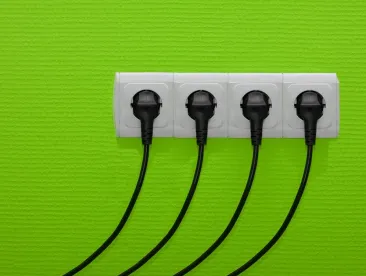President Trump issued an Executive Order (EO), “Securing the United States Bulk-Power System” on May 1, 2020. The EO directs the Secretary of Energy to lead an interagency task force to block a wide range of transactions involving “bulk-power system electronic equipment” where the transaction involves equipment “owned by, controlled by, or subject to” the jurisdiction of “a foreign adversary.” The terms are described in greater detail below.
The EO does not name specific countries, but it is expected that it will include the People’s Republic of China, and some companies operating in China. This is the latest in a series of Executive Orders issued under the authority of the International Emergency Economic Powers Act (IEEPA) that are directed at perceived threats to U.S. national security from China and Chinese government industrial policies.
Like last year’s EO on telecommunications infrastructure, this latest EO is a further reflection of the administration’s “whole of government” approach to addressing potential national security risks in the U.S.-China trade relationship and fills an important gap in existing national security review mechanisms under the Committee on Foreign Investment in the United States (CFIUS) process. Companies operating in the energy and energy infrastructure sectors should carefully review the latest Executive Order and its potential impact on their business and investments.
Details of the Executive Order
What the EO Prohibits
The EO applies to “any acquisition, importation, transfer, or installation of any bulk-power system electronic equipment” that was initiated on or after May 1, 2020 by “any person, or with respect to any property, subject to the jurisdiction of the United States, where the transaction involves any property in which any foreign country or a national thereof has any interest ….” Covered transactions also include any “interest in a contract for the provision of equipment.”
A covered transaction can be blocked or ordered unwound — and the companies involved subject to civil or criminal penalties under IEEPA — if an interagency body (chaired by the Secretary of Energy, in coordination with the Director of the Office of Management and Budget, and in consultation with the Secretary of Defense, the Secretary of Homeland Security, the Director of National Intelligence, and, as appropriate, the heads of other executive departments and agencies) determines that a covered transaction involves bulk-power system electronic equipment designed, developed, manufactured or supplied by persons owned by, controlled by or subject to the jurisdiction or direction of a foreign adversary, and any one of three conditions is met:
- The transaction poses an “undue risk” of sabotage to or subversion of the “design, integrity, manufacturing, production, distribution, installation, operation, or maintenance of the bulk-power system in the United States.”
- The transaction poses an undue risk of “catastrophic effects” on “the security or resiliency of United States critical infrastructure or the economy of the United States.”
- The transaction “otherwise poses an unacceptable risk to the national security of the United States or the security and safety of United States persons.”
The EO also states that the Secretary of Energy, in consultation with the heads of other agencies as appropriate, “may establish and publish criteria for recognizing particular equipment and particular vendors in the bulk-power system electric equipment market as pre-qualified for future transactions.”
Definition of “Foreign Adversary”
Similar to the May 2019 Executive Order on telecommunications infrastructure, the EO defines a “foreign adversary” as “any foreign government or foreign nongovernment person engaged in a long-term pattern or serious instances of conduct significantly adverse to the national security of the United States or its allies or the security and safety of United States persons.” Thus, although aimed primarily at China, the EO could potentially apply to bulk power systems and equipment from other countries, such as Russia.
Definitions of “Bulk-Power System” and “Bulk-Power System Electronic Equipment”
For purposes of the EO, the term “bulk-power system” means “(i) facilities and control systems necessary for operating an interconnected electric energy transmission network (or any portion thereof); and (ii) electric energy from generation facilities needed to maintain transmission reliability.” The definition in the EO includes “transmission lines rated at 69,000 volts (69 kV) or more, but does not include facilities used in the local distribution of electric energy.”
The EO also defines “bulk-power system electronic equipment” as “items used in bulk-power system substations, control rooms, or power generating stations, including reactors, capacitors, substation transformers, current coupling capacitors, large generators, backup generators, substation voltage regulators, shunt capacitor equipment, automatic circuit reclosers, instrument transformers, coupling capacity voltage transformers, protective relaying, metering equipment, high voltage circuit breakers, generation turbines, industrial control systems, distributed control systems, and safety instrumented systems.” Items not described above and that have “broader application of use” beyond the bulk-power system are outside the scope of the EO.
Establishment of Task Force and Rule-Making Process
The EO establishes a Task Force on Federal Energy Infrastructure Procurement Policies Related to National Security (Task Force). The Task Force is instructed “to protect the Nation from national security threats through the coordination of Federal Government procurement of energy infrastructure and the sharing of risk information and risk management practices to inform such procurement.”
The Secretary of Energy will chair the Task Force, and will include the Secretary of Defense, Secretary of the Interior, Secretary of Commerce, Secretary of Homeland Security, Director of National Intelligence, Director of the Office of Management and Budget, and the head of any other agency designated by the Secretary of Energy and the Secretary of the Interior.
The EO directs the Task Force, among other things, to “develop a recommended consistent set of energy infrastructure procurement policies and procedures for agencies … to ensure that national security considerations are fully integrated across the Federal Government ….” The Task Force will also “consult with the Electricity Subsector Coordinating Council and the Oil and Natural Gas Subsector Coordinating Council” in developing recommendations and evaluations.
The EO states that “[b]ecause attacks on the bulk-power system can originate through the distribution system, the Task Force shall engage with distribution system industry groups, to the extent consistent with law and national security.” Within 180 days of receiving recommendations from the Task Force, the Federal Acquisition Regulation (FAR) Council will present a proposal for notice and public comment an amendment to the FAR to implement the Task Force’s recommendations.
As with last year’s EO on telecommunications equipment, the implementation of the latest EO will be key. Companies that may be impacted by these rule changes or that rely on imported bulk power systems or equipment should carefully review the latest EO and ensure that their views are taken into account in the rule-making process to implement the EO.






 />i
/>i
